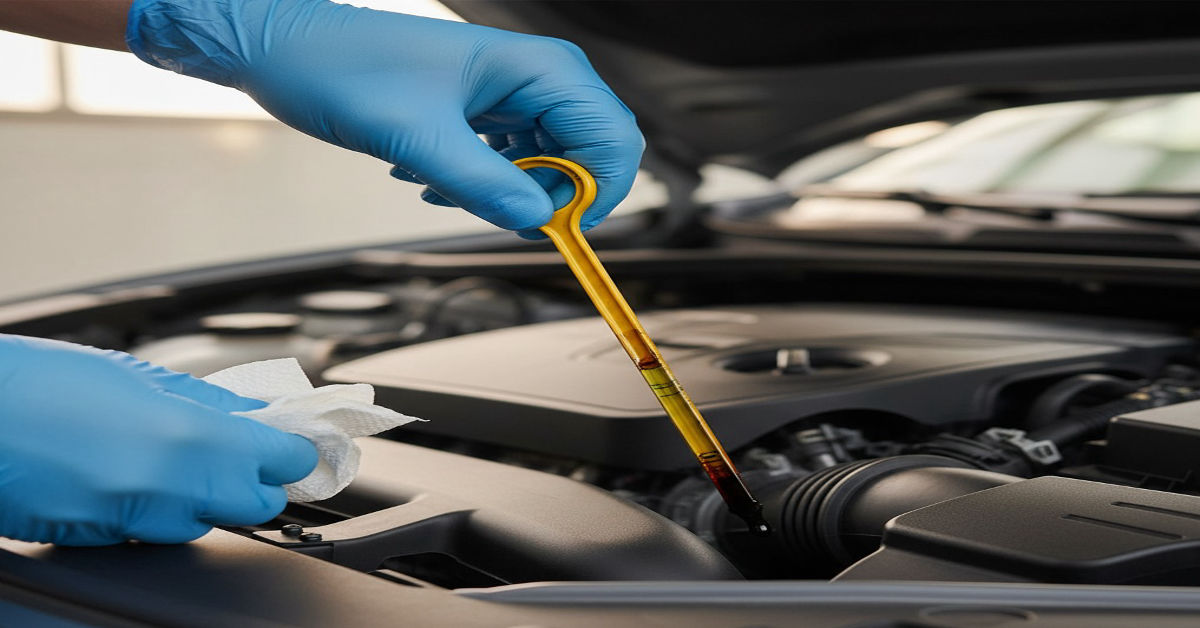Your car is more than just a way to get from point A to point B; it’s an investment that deserves care and attention. One of the simplest yet most crucial maintenance tasks you can perform is checking your engine oil. This often-overlooked aspect of car care plays a vital role in keeping your vehicle running smoothly and efficiently. But how do you know when it’s time to take action? Understanding how to check engine oil not only ensures optimal performance but also extends the life of your beloved ride.
In this guide, we’ll break down everything you need to know about monitoring your engine oil levels—so grab those gloves, and let’s dive into the nitty-gritty details!
Why Checking Engine Oil is Important
Engine oil is the lifeblood of your vehicle. It lubricates crucial components, reducing friction and wear. Without proper lubrication, engine parts can overheat and sustain serious damage.
Regularly checking your engine oil ensures it remains at optimal levels. Low oil can lead to inadequate protection, resulting in increased wear on bearings and pistons. This might shorten your car’s lifespan significantly.
Moreover, clean oil helps maintain fuel efficiency. Dirty or insufficient oil forces the engine to work harder, which translates to lower mileage and higher costs at the pump.
Additionally, checking your engine oil is a straightforward task that saves you money in the long run. Addressing minor issues before they escalate prevents costly repairs down the road. A little time invested now goes a long way toward ensuring reliability when you hit the road later on.
Step-by-Step Guide to Checking Engine Oil
Checking your engine oil is a straightforward task. Start by parking your car on a level surface. This ensures an accurate reading.
Next, open the hood and locate the dipstick, usually marked with a bright handle. Pull it out carefully and wipe it clean with a lint-free cloth or paper towel.
Reinsert the dipstick back into its tube fully. Remove it again to check the oil level. The dipstick will have markings indicating whether you’re in the “low” or “full” range.
If the oil level is low, it’s time to add more oil through the designated fill cap. Always use oil that meets your vehicle’s specifications for optimal performance.
Ensure everything is tightly secured before closing the hood. Regularly checking this vital fluid keeps your engine healthy and running smoothly.
Signs of Low Engine Oil
Low engine oil can lead to serious issues if not addressed promptly. One of the first signs is an illuminated oil warning light on your dashboard. This should never be ignored.
Another noticeable indicator is a change in engine noise. If you hear unusual sounds, such as ticking or knocking, your engine may be lacking adequate lubrication.
You might also notice a burning smell while driving. This could mean that oil is leaking onto hot engine components.
Additionally, keep an eye out for any visible leaks under your vehicle. Puddles or spots where you park indicate potential problems that need attention.
Check the color and consistency of the oil using the dipstick. Dark, gritty oil suggests it’s time for a change—immediate action can help prevent costly repairs down the road.
How Often Should You Check and Change Your Engine Oil?
Regularly checking your engine oil is crucial for maintaining optimal car performance. Ideally, you should inspect the oil level every month or before any long trip. This simple habit can help catch potential issues early on.
As for changing the engine oil, most manufacturers recommend doing it every 5,000 to 7,500 miles. However, this can vary based on factors like driving conditions and vehicle type. If you’re frequently in stop-and-go traffic or drive under heavy loads, consider changing it more often.
Always consult your owner’s manual for specific guidelines tailored to your vehicle. Keeping track of these intervals ensures that your engine runs smoothly and efficiently over time. Don’t forget; regular maintenance not only extends the life of your car but also enhances its overall performance.
Other Maintenance Tips for Optimal Car Performance
Regular tire maintenance is essential for safety and performance. Check your tire pressure monthly to ensure they are properly inflated. Under-inflated tires can lead to poor handling and decreased fuel efficiency.
Don’t overlook the importance of filters. Change the air filter as needed to keep your engine breathing easily. A clean filter improves airflow, enhancing overall performance.
Battery health plays a key role in starting your vehicle smoothly. Inspect battery terminals for corrosion and ensure connections are secure.
Fluids other than oil should also be monitored. Brake fluid, coolant, and transmission fluid levels impact various systems in your car. Regularly top them off or replace them according to the manufacturer’s recommendations.
Pay attention to brake pads and rotors; they wear down over time and need replacing for safe stopping power. Keeping these components in check enhances both performance and safety on the road.
Benefits of Regularly Checking and Changing Engine Oil
Regularly checking and changing engine oil is essential for maintaining your vehicle’s health. Fresh oil lubricates key engine components, reducing friction and wear over time. This means less chance of breakdowns and expensive repairs.
Clean oil also helps with efficient fuel combustion. When the engine runs smoothly, you’ll notice better gas mileage, saving you money at the pump.
Moreover, keeping up with oil changes can prolong the life of your car’s engine. A well-maintained engine performs better and has a higher resale value when it’s time to upgrade.
Additionally, regular checks allow you to spot leaks or contamination early on. Addressing these issues promptly can prevent more significant damage down the road.
In essence, consistent attention to your engine oil contributes significantly to both performance and longevity of your vehicle.
Conclusion
Keeping an eye on your engine oil is essential for maintaining the health of your vehicle. Regular checks and changes can prevent costly repairs down the line and ensure that your car runs smoothly. By following simple steps to How to Check Engine Oil, you empower yourself as a driver.
Recognizing signs of low engine oil will help you avoid unexpected breakdowns. Additionally, sticking to a maintenance schedule boosts performance and longevity.
Prioritizing routine care for your car reflects in its reliability and efficiency. Embracing these practices transforms not just how well your car operates but also enhances safety on the road to How to Check Engine Oil. Stay informed, stay proactive, and enjoy every drive with peace of mind knowing that you’re taking good care of your automobile.







